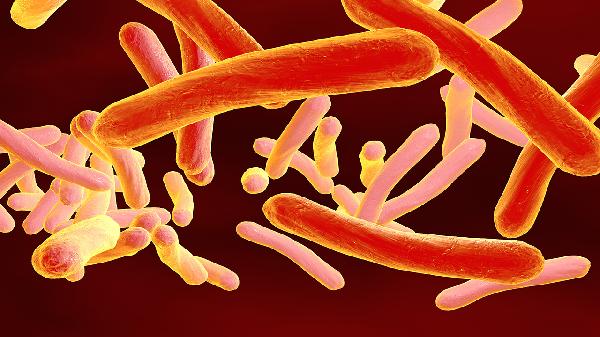Neurosyphilis is a disease caused by the infection of the nervous system by Treponema pallidum (the syphilis spirochete), and it is divided into congenital and acquired syphilis. So, what are the causes of neurosyphilis?
(1) Etiology
Congenital syphilis is caused by the transmission of the syphilis pathogen from the mother to the fetus through the placenta, while acquired syphilis is mainly transmitted through sexual contact.
(2) Pathogenesis
After entering the bloodstream, Treponema pallidum can invade the cerebrospinal fluid and the central nervous system within 1 to 3 months.
1. Asymptomatic neurosyphilis
The pathological changes in the brain are not well understood due to the difficulty in obtaining autopsies from patients with this condition. However, it is speculated that the majority of cases primarily involve the meninges, with a few cases also affecting the brain parenchyma and blood vessels.
2. Meningeal neurosyphilis
Pathological changes: Although this condition is classified as a meningeal inflammation, it is often accompanied by mild cortical damage. Macroscopically, diffuse inflammatory reactions, thickening, or turbidity of the leptomeninges can be observed. In the thickened meninges or severely infected meninges, miliary gummas may be seen, resembling miliary tuberculosis, but the two can be distinguished by microscopic examination.

Microscopic examination of the fibrous tissue of the meninges mainly shows lymphocyte infiltration, with a small number of plasma cells also visible. Lymphocyte infiltration can also be seen around the meningeal blood vessels. Inflammatory changes limited to the convexity of the brain may show lymphocytic and plasma cell infiltration around the Virchow-Robin spaces.
Inflammation limited to the base of the brain often damages the cranial nerves, showing interstitial inflammatory damage to the oculomotor, trochlear, and facial nerves. The accumulation of exudates at the base of the brain can obstruct the circulation of cerebrospinal fluid, even blocking the foramen of Magendie or the lateral apertures of the fourth ventricle, leading to hydrocephalus. The ependymal layer of the ventricular wall appears granular or sandy, due to the proliferation of subependymal astrocytes. If gummas are found in the thickened meninges, microscopic examination may reveal fibroblasts, multinucleated giant cells, plasma cells, and necrotic tissue in the center. Reticulin derived from reticular tissue can also be seen, which helps differentiate it from tuberculous nodules, as caseous necrosis in tuberculous nodules does not contain reticulin. If the diameter of the gumma reaches several centimeters, it can compress adjacent neural tissue and, depending on its location and size, cause different focal clinical symptoms. In areas of damaged leptomeninges, fibrous astrocyte proliferation extending into the subarachnoid space can sometimes be seen. In the blood vessels of the meninges and brain, endarteritis and perivascular inflammation are common, sometimes leading to encephalomalacia.
Syphilitic meningeal damage, if limited to the spinal cord, is called syphilitic spinal arachnoiditis, and if the dura mater is involved, it is called spinal pachymeningitis.
3. Vascular neurosyphilis
Pathological changes:
Vascular neurosyphilis mainly affects the medium and small arteries of the brain and spinal cord, causing syphilitic endarteritis and softening of the corresponding areas of the brain and spinal cord.
Commonly affected arteries include the recurrent artery, a branch of the anterior cerebral artery, which mainly supplies the anterior and inferior parts of the head of the caudate nucleus, the adjacent putamen, and the anterior limb of the internal capsule. The middle cerebral artery and its branches can also be involved, supplying the putamen, caudate nucleus, the remaining part of the anterior limb of the internal capsule, the dorsal part of the posterior limb of the internal capsule, and the globus pallidus. The vertebral artery, basilar artery, and anterior spinal artery can also be affected.
The lesions may be limited to one artery or a segment of an artery. The adventitia of the affected artery thickens, with lymphocyte and plasma cell infiltration. The media thins, with destruction of the muscular and elastic layers, although the elastic fibers may sometimes remain intact. Subintimal fibrosis thickens and narrows the vascular lumen. Thrombosis occurs in the affected artery, with organization and recanalization. Some arteries develop obliterative endarteritis. Smaller arteries may only have intimal hyperplasia, causing luminal narrowing without inflammatory reaction, known as Nissl-Alzheimer arteritis. Inflammatory cell infiltration can be seen around the vasa vasorum of large vessels. Due to the different arteries affected by syphilitic arteritis, the location of the damaged neural tissue varies, with softening lesions of different sizes, and sometimes multiple small infarcts in the brain.
The above vascular changes can also be seen in other types of neurosyphilis, such as meningovascular syphilis and general paresis. If syphilitic arteritis affects the anterior or posterior spinal artery, it can cause varying degrees of softening in one or several spinal segments, depending on the collateral circulation of the spinal cord. The softening areas show typical infarct-like pathological changes. In very rare cases, aneurysms may occur.
4. Tabes dorsalis
The pathological changes in this disease are characterized by selective degeneration of nerve fiber tracts, mainly affecting the posterior roots and posterior columns of the lumbar, sacral, and lower thoracic spinal cord. Macroscopically, the leptomeninges, especially the dorsal part, appear thickened and turbid. The posterior roots of the lower spinal cord become thin and flattened, with significant dorsal spinal cord involvement. The posterior columns become narrow and shriveled, feeling harder than normal. If the optic nerve is involved, its intracranial segment and the optic chiasm become thin and adhere to the surrounding leptomeninges.
Microscopic examination in the early stages of the disease shows inflammatory changes and thickening of the leptomeninges, mainly with lymphocyte and plasma cell infiltration, mostly limited to the leptomeninges of the posterior roots and the root sleeves. Interstitial neuritis is seen in the posterior roots, with degeneration of the nerve fibers and inflammatory cell infiltration between the fibers. Demyelination of the posterior columns, especially the fasciculus gracilis, is evident, with myelin breakdown and nerve fiber atrophy. In later stages, nerve fibers disappear, with astrocyte proliferation and some connective tissue proliferation, but no necrosis or inflammatory reaction. These changes particularly affect the lower thoracic and lumbosacral segments. Sometimes, the afferent fibers of the sympathetic nerves and the anterior horn cells may also degenerate, while other conduction tracts in the spinal cord remain unaffected.
In cases of cranial nerve palsy, the changes in the cranial nerves are similar to those in the posterior roots, with the III, IV, and VIII cranial nerves being more commonly affected. In cases of optic neuritis, demyelination of the nerve fibers of the optic nerve and optic chiasm is seen, with inflammatory infiltration mainly in the peripheral areas. The arachnoid membrane tightly adheres to the optic nerve, showing changes of optic chiasm arachnoiditis.
In very rare cases, the cervical spinal cord and its posterior roots are mainly affected, known as cervical tabes dorsalis. The pathogenesis of the selective degeneration of the posterior roots and posterior columns in this disease is not well understood, but it is generally considered a toxic degenerative lesion accompanied by reactive inflammatory changes. The relationship between this disease and immunology is still under investigation.
5. General paresis
The pathological changes mainly affect the cerebral cortex. Macroscopically, the meninges appear turbid and thickened, possibly adhering to the underlying cerebral cortex and the overlying skull. The brain volume is reduced, with narrowed gyri and widened sulci containing more fluid, most notably in the frontal lobe, followed by the temporal lobe. Brain sections may show bilateral ventricular enlargement, with the ependymal walls of the ventricular system often showing a granular reaction due to granular ependymitis.
Microscopic examination: In the frontal and temporal lobes, inflammatory cell infiltration, mainly lymphocytes, plasma cells, and phagocytes, is seen around the blood vessels along the Virchow-Robin spaces and around the meningeal blood vessels. The degree of inflammatory changes varies depending on the stage and severity of the infection. In the blood vessels of the cortex, the adventitia shows lymphocyte and plasma cell infiltration, with fibroblast proliferation in the intima, where Treponema pallidum may sometimes be found. Diffuse degeneration and loss of nerve cells in the cerebral cortex are seen, with reactive astrocyte, especially microglial, proliferation. Glial nodules may form in areas of astrocyte proliferation. Iron deposition is commonly seen around small blood vessels in the brain parenchyma.
In treated cases, the microscopic findings are somewhat affected, with reduced inflammatory reactions, sometimes even no inflammatory changes, and no meningeal hyperplasia. Only neuronal loss and reactive gliosis in the cerebral cortex can be seen.
6. Congenital neurosyphilis
Most cases result in stillbirth. Early infection during pregnancy can lead to hydrocephalus and brain malformations, making survival difficult. Early postnatal cases may have meningovascular infection, while those with chronic development in adolescence may show pathological changes similar to general paresis and tabes dorsalis, consistent with those in adults.
























